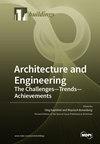Understanding the Factors and Consequences of Gas Deflagration Accident in Metro Shield Tunnel: Site Investigation and Numerical Analysis
IF 3.1
3区 工程技术
Q2 CONSTRUCTION & BUILDING TECHNOLOGY
引用次数: 0
Abstract
This study aims to investigate the factors and consequences of gas deflagration accidents in metro shield tunnels based on on-site investigation and numerical analysis. We built a numerical model and detection process for an underground shield tunnel subjected to an internal explosion from an actual accident. The tunnel geometry under consideration is the same as that used for the metro line. Concerning the limitations of research on the failure and recovery mechanism of shield segmental linings under the action of internal explosion load, an explosion accident of a shield segmental lining under construction caused by the shield tunneling machine destroying natural gas pipelines was discussed, in which the structure failure characteristics during the explosion and the structure repair method after the explosion were investigated. An interval repair scheme was proposed, which provides experience for the treatment of similar engineering accidents. To investigate the gas explosion within the tunnel during the accident, the finite element software Ansys LS-DYNA with the arbitrary Lagrangian–Eulerian (ALE) technique was employed to simulate the explosion scenario. Dynamic analyses were carried out to reproduce the blast scenario. The stress distribution within the segmental lining as well as the lining’s deformation were calculated. The potential applications of the treatment and planning of comparable engineering mishaps were discussed in the study.了解地铁盾构隧道瓦斯爆燃事故的因素和后果:现场调查和数值分析
本研究旨在通过现场调查和数值分析,研究地铁盾构隧道内瓦斯爆燃事故的因素和后果。我们根据实际事故建立了地下盾构隧道内部爆炸的数值模型和检测流程。所考虑的隧道几何形状与地铁线所用的相同。针对盾构分段衬砌在内部爆炸荷载作用下的破坏和恢复机理研究的局限性,讨论了盾构掘进机破坏天然气管道导致的在建盾构分段衬砌爆炸事故,研究了爆炸过程中的结构破坏特征和爆炸后的结构修复方法。提出了区间修复方案,为类似工程事故的处理提供了经验。为研究事故期间隧道内的瓦斯爆炸,采用了有限元软件 Ansys LS-DYNA 和任意拉格朗日-欧勒(ALE)技术来模拟爆炸场景。为再现爆炸场景进行了动态分析。计算了分段衬里内的应力分布以及衬里的变形。研究讨论了类似工程事故的处理和规划的潜在应用。
本文章由计算机程序翻译,如有差异,请以英文原文为准。
求助全文
约1分钟内获得全文
求助全文
来源期刊

Buildings
Multiple-
CiteScore
3.40
自引率
26.30%
发文量
1883
审稿时长
11 weeks
期刊介绍:
BUILDINGS content is primarily staff-written and submitted information is evaluated by the editors for its value to the audience. Such information may be used in articles with appropriate attribution to the source. The editorial staff considers information on the following topics: -Issues directed at building owners and facility managers in North America -Issues relevant to existing buildings, including retrofits, maintenance and modernization -Solution-based content, such as tips and tricks -New construction but only with an eye to issues involving maintenance and operation We generally do not review the following topics because these are not relevant to our readers: -Information on the residential market with the exception of multifamily buildings -International news unrelated to the North American market -Real estate market updates or construction updates
 求助内容:
求助内容: 应助结果提醒方式:
应助结果提醒方式:


